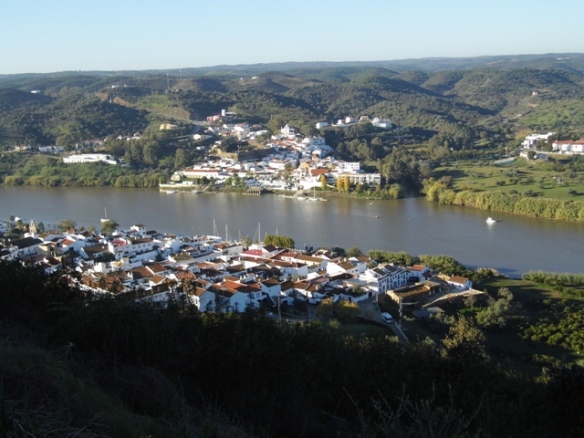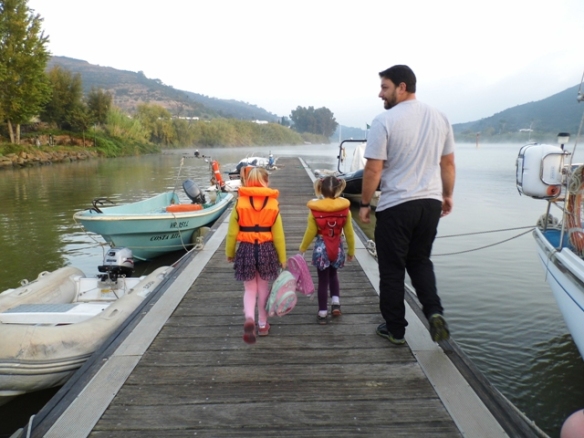‘What’s that sound?’ Katie asked in a fearful voice.
We were walking home from the village shortly after 9pm. ‘Home’ at the moment is a tiny house and caravan on a plot of land by the river, with Carina moored about 100 metres away. We’ve been living here for over two weeks, taking care of a cat and living off the fat of the land while the owners are away. Our lives are lived mainly in the little house and out of doors, but at night we sleep in the caravan, which is about a metre away from the fence that marks the boundary between this and the neighbouring plot of land. Juan tends the vegetable patch next door, while Niño keeps a small flock of sheep there. Most of the ewes wear heavy bells around their necks and our time in the caravan is accompanied by the tinkling of bells that I always associate with my very first afternoon on the Rio Guadiana. It is a sound that I love. The ewes noisily make their way through the long golden grass throughout the morning and evening, bells ringing as they munch their way through the field. Most mornings when I wake up the first living being I see is a sheep, not much more than a metre from my window, grazing near the fence. In the past few days a couple of skinny little lambs have appeared, bleating loudly when their mothers don’t pay them enough attention.
So when Katie asked what the strange sound was as we walked home from the village, I was pretty sure I knew what it was. The sound of a mother giving birth is pretty unmistakable! ‘I think one of the sheep is giving birth’, I said. ‘Come on’. We walked quietly onto ‘our’ plot of land. The flock of sheep was divided into two groups, both standing towards the bottom of the steep slope in the neighbouring plot, looking up the hillside to where a lone ewe was lying on the ground making guttural moaning sounds.
‘What’s wrong with it?’ Katie asked. ‘There’s nothing wrong with her’, I said. ‘She’s having a baby’.
‘How do you know?’ Lily asked. ‘Well, it’s a sound mothers make when they’re in labour’.
‘Did you make that sound?’ Lily asked, wide-eyed.
‘Something like that’, I laughed, omitting the part about yelling at Julian to ‘stop playing that f***ing piano’ as he entertained the midwives in the dining room while I was wracked by contractions in the living room. Ah, such fond memories!
I told the girls to keep quiet and not make any sudden noises. Remembering the piano incident (Lily) and the ‘now’s not the f***ing time’ incident when Julian was regaling the midwives with stories of his adventures in Antarctica as I passed from the second to third stage of labour (Katie), I knew the ewe needed to be as undisturbed as possible while she was going through this. She let out a pitiful moan, stood up, and the head and shoulders of a lamb appeared from her rear end. ‘Are you crying again, Mum’, Lily asked, rolling her eyes, used as she is to her mum’s bladder being far to close to her eyeballs. ‘Maybe just a little’, I croaked.
A couple more pushes and the little lamb was born. The mother lay down, making a new sound, almost a cooing sound, that I’ve never heard a sheep make before. Mother and baby lay there for a few minutes, the lamb soon trying to lift its head off the ground. Once the head was up, it then tried to get its legs going. The ewe was up now, licking her newborn all over. She had given birth on the steep slope of a hill and with each attempt of the precocious little lamb to stand up, it slid further down the hill. The ewe continued cooing and licking. Before long, the little back legs were shakily off the ground and with a few more attempts, the little thing, less than 10 minutes old, was standing up and nosing its way to it’s mother’s udder for its first meal.
Lily and I were moved by the experience. Katie, only one thing on her mind, insisted we go into the house so I could make her supper. She’s heartless, that one.




